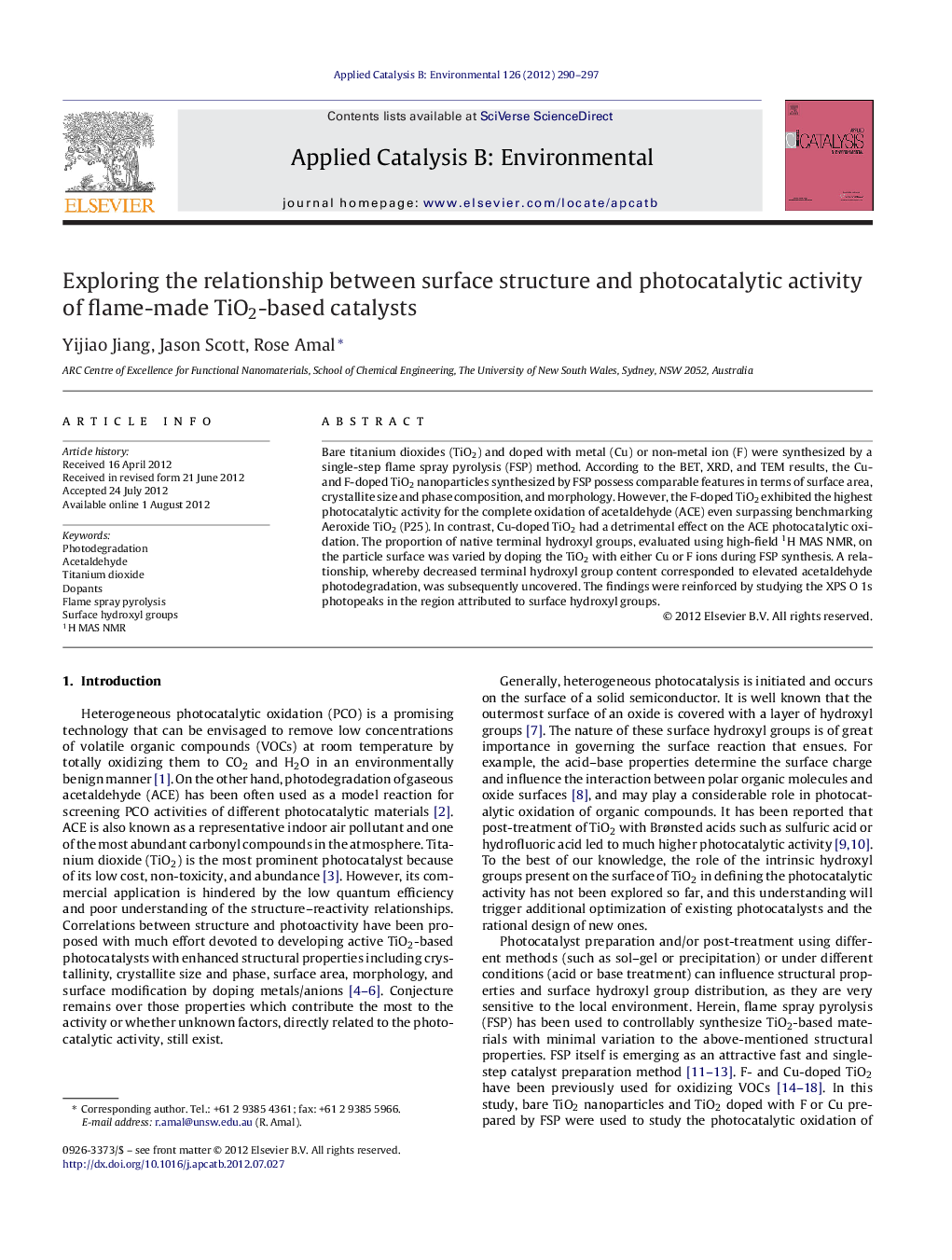| کد مقاله | کد نشریه | سال انتشار | مقاله انگلیسی | نسخه تمام متن |
|---|---|---|---|---|
| 46554 | 46441 | 2012 | 8 صفحه PDF | دانلود رایگان |

Bare titanium dioxides (TiO2) and doped with metal (Cu) or non-metal ion (F) were synthesized by a single-step flame spray pyrolysis (FSP) method. According to the BET, XRD, and TEM results, the Cu- and F-doped TiO2 nanoparticles synthesized by FSP possess comparable features in terms of surface area, crystallite size and phase composition, and morphology. However, the F-doped TiO2 exhibited the highest photocatalytic activity for the complete oxidation of acetaldehyde (ACE) even surpassing benchmarking Aeroxide TiO2 (P25). In contrast, Cu-doped TiO2 had a detrimental effect on the ACE photocatalytic oxidation. The proportion of native terminal hydroxyl groups, evaluated using high-field 1H MAS NMR, on the particle surface was varied by doping the TiO2 with either Cu or F ions during FSP synthesis. A relationship, whereby decreased terminal hydroxyl group content corresponded to elevated acetaldehyde photodegradation, was subsequently uncovered. The findings were reinforced by studying the XPS O 1s photopeaks in the region attributed to surface hydroxyl groups.
Figure optionsDownload as PowerPoint slideHighlights▸ TiO2-based nanoparticles were controllably synthesized by one-step flame spray pyrolysis. ▸ Cu- or F-TiO2 gave comparable textural and morphological properties. ▸ Surface hydroxyl groups on the TiO2 play a key role in defining their activity. ▸ Low terminal hydroxyl group content is congruent with a high photocatalytic activity.
Journal: Applied Catalysis B: Environmental - Volume 126, 25 September 2012, Pages 290–297